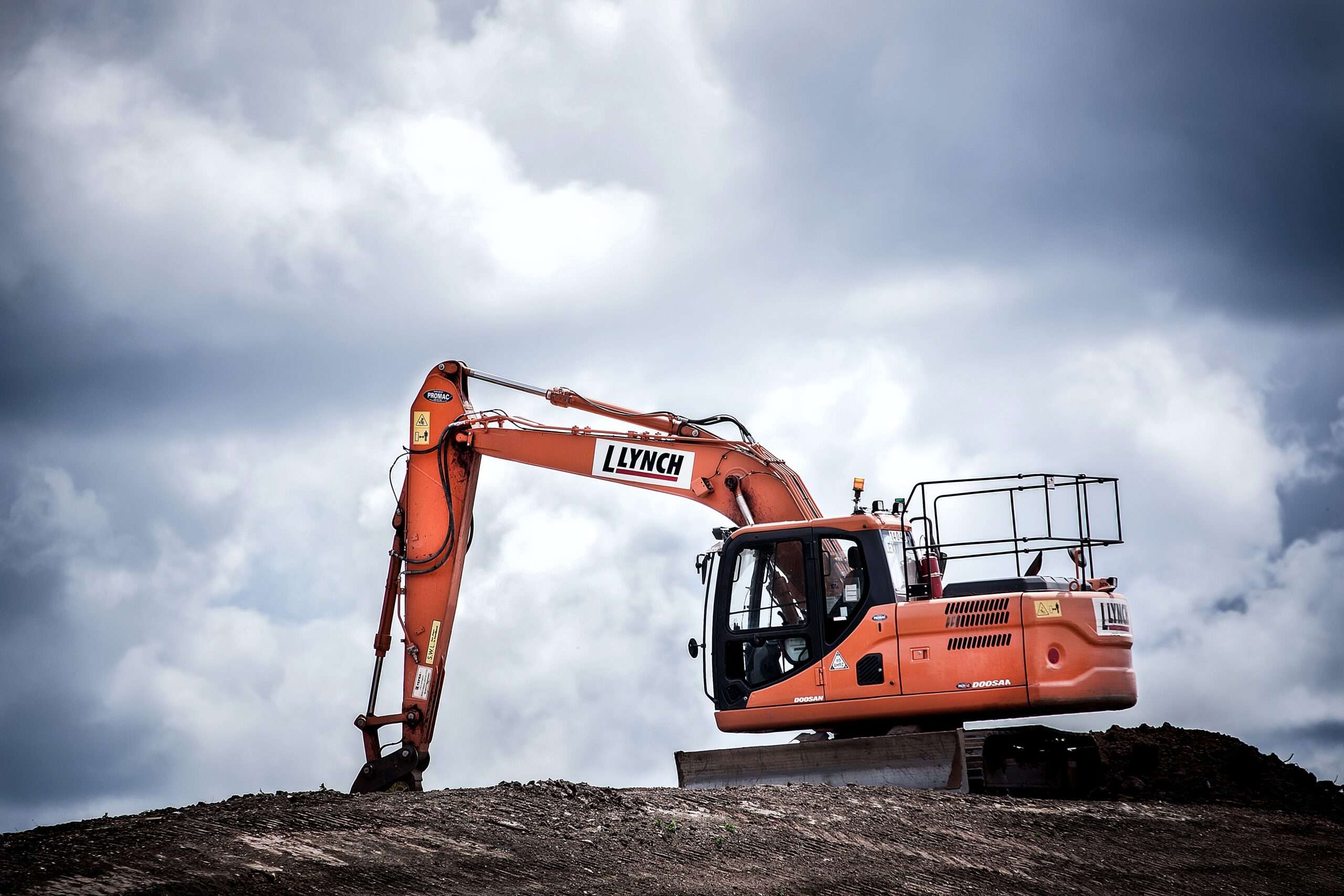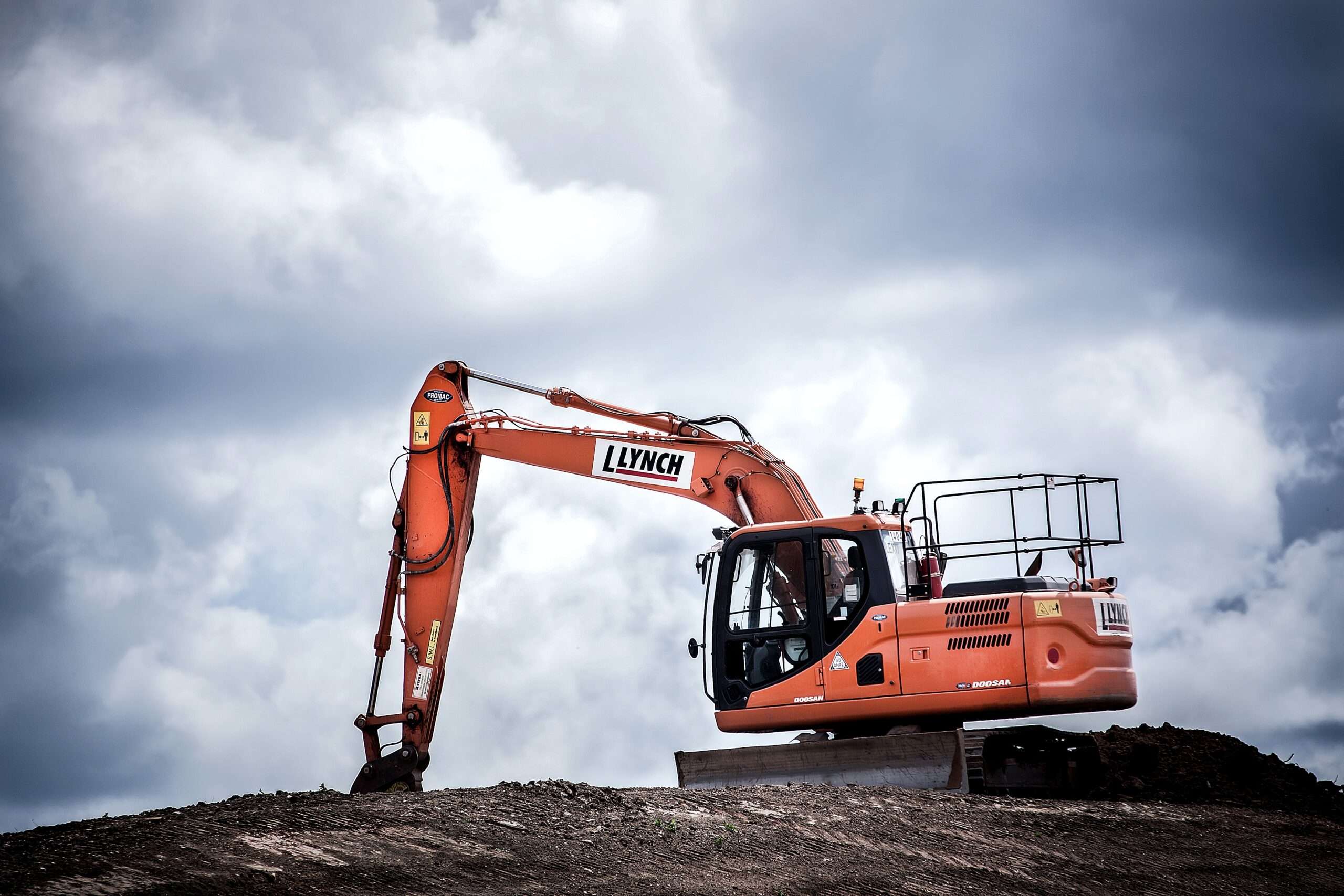In this article, I will explore the topic of shipping containers and their sturdiness, shedding light on their potential for off-grid living. As the demand for alternative housing solutions grows, shipping containers have gained popularity for their versatility and affordability. However, questions arise regarding their durability and ability to withstand various environmental conditions. By examining the structural characteristics and testing techniques, I will provide insights into the sturdiness of shipping containers and their viability as a long-term housing option for those seeking a self-sufficient lifestyle.

Shipping Container Structure
Shipping containers are designed and constructed to withstand the rigors of international transportation. They are typically made from steel and are built to strict specifications to ensure durability and strength. The design and construction of shipping containers involve careful consideration of various factors, including the materials used, the structural integrity, and the ability to withstand environmental conditions.
Design and Construction of Shipping Containers
The design of shipping containers is based on standardized dimensions to enable efficient transportation and stacking. The most common type of shipping container is the ISO container, which has a length of 20 or 40 feet, a width of 8 feet, and a height of 8.5 feet. These dimensions allow for easy handling and stacking, both on ships and on trucks.
The construction of shipping containers involves the use of high-strength steel panels that are welded together to form a rigid structure. The floor of the container is typically made from marine-grade plywood or other sturdy materials to provide a strong and durable surface for the goods being transported. The walls and roof of the container are also made from steel, which provides excellent strength and protection.
Materials Used in Shipping Containers
Steel is the primary material used in the construction of shipping containers due to its strength, durability, and resistance to corrosion. The steel panels used in the walls, roof, and floor of shipping containers are usually made from corten steel, which has high tensile strength and is highly resistant to rust and corrosion. Corten steel is known for its ability to withstand harsh weather conditions and protect the goods inside the container.
The use of steel in shipping container construction also allows for easy repair and modification. Steel panels can be easily replaced if damaged, and the modular nature of the structure allows for customization and adaptation to different uses and requirements.
Strength and Durability of Shipping Containers
One of the primary reasons why shipping containers are widely used is their strength and durability. Shipping containers are designed to withstand heavy loads, harsh weather conditions, and rough handling during transportation. The combination of high-strength steel construction, rigid structure, and careful design ensures that shipping containers can withstand the demands of international shipping.
Shipping containers are designed to be stacked on top of each other, both on ships and at storage yards. This requires the containers to have sufficient strength and load-bearing capacity to support the weight of other containers. The corner posts and frames of shipping containers are reinforced to provide additional strength and stability.
Factors Affecting Sturdiness of Shipping Containers
While shipping containers are known for their sturdiness, several factors can affect their overall strength and durability. These factors include environmental conditions, internal and external modifications, the age and maintenance of the container, as well as the stacking and transportation processes.
Environmental Conditions
The environment in which a shipping container is located can have a significant impact on its sturdiness. Extreme temperatures, high humidity, saltwater exposure, and corrosive substances can all contribute to the deterioration of the container’s structure. For example, prolonged exposure to saltwater can cause corrosion and weaken the steel panels, reducing the container’s strength.
Internal and External Modifications
Shipping containers are often modified to suit specific purposes and requirements. These modifications can include adding windows, doors, insulation, ventilation, or even removing sections of the container. While modifications can enhance the functionality of the container, they can also affect its structural integrity. It is essential to ensure that any modifications are done in a way that does not compromise the container’s strength or durability.
Age and Maintenance of the Container
As with any structure, the age and maintenance of shipping containers play a crucial role in determining their sturdiness. Regular maintenance, including inspecting for signs of corrosion, repairing any damage, and repainting, can help prolong the lifespan of the container. Older containers may require more extensive maintenance to ensure that they remain structurally sound.
Stacking and Transportation Processes
The stacking and transportation processes can also impact the sturdiness of shipping containers. When containers are stacked, the weight of the containers above places additional stress on the ones below. Proper stacking techniques and equipment must be used to ensure that the containers are evenly distributed and securely held in place. During transportation, the containers may be subjected to vibrations, impacts, and movements, which can affect their structural integrity if not properly secured.
Strength and Load-Bearing Capacity
Shipping containers are designed to have specific load-bearing capacities to ensure safe transportation and stacking. Various aspects of the container’s structure determine its strength and load-bearing capacity, including its stacking, floor, roof, side, and corner post strength.
Stacking Capacity
The stacking capacity of a shipping container refers to its ability to support the weight of other containers when they are stacked on top. Shipping containers are designed to be stacked up to a certain height, depending on their load-bearing capacity. Proper stacking techniques, including the use of twist locks and corner castings, ensure that the containers are securely held in place and evenly distribute the weight.
Floor Load Capacity
The floor of a shipping container must be able to support the weight of the goods being transported without deflecting or sustaining damage. The floor load capacity of a container is determined by its design and the materials used. Typically, a standard 20-foot shipping container can handle a floor load of up to 30 tons, while a 40-foot container can handle up to 40 tons. However, these capacities can vary depending on the specific design and construction of the container.
Roof Load Capacity
The roof of a shipping container is designed to support the weight of other containers when they are stacked on top. The roof load capacity is determined by the strength of the steel panels used and the structural support provided by the corner posts and frames. Generally, shipping containers can withstand loads of up to 320 kN/m² on the roof.
Side Load Capacity
The side load capacity of a shipping container refers to its ability to resist external forces, such as wind, waves, or impact. The steel walls of the container, combined with the structural reinforcements, provide excellent resistance to lateral loads. The specific load capacity may vary depending on the container’s design, construction, and standards compliance.
Corner Post and Frame Strength
The corner posts and frames of shipping containers are crucial to maintaining the overall structural integrity and load-bearing capacity. These components are designed to withstand the weight and stress of stacking, transportation, and handling. The strength of the corner posts and frames is essential for ensuring the stability of the container and preventing deformation or collapse.
Weather Resistance
Shipping containers are exposed to various weather conditions during transportation and storage. The ability to resist these weather conditions is vital to ensure the integrity of the container and the goods inside.
Corrosion Resistance
One of the significant weather-related challenges for shipping containers is corrosion. Shipping containers are designed to be resistant to rust and corrosion, thanks to the use of corten steel panels. Corten steel contains specific alloys that form a protective layer when exposed to the atmosphere, preventing further corrosion. Regular inspection, maintenance, and appropriate surface treatments can help preserve the container’s corrosion resistance.
Sealing and Insulation
Sealing and insulation play a crucial role in protecting the goods inside shipping containers from weather elements. Proper sealing prevents moisture and water penetration, ensuring that the goods remain dry and undamaged. Insulation, on the other hand, helps regulate temperature and prevent condensation, maintaining the quality and condition of the cargo.
Water and Wind Resistance
Shipping containers are designed to withstand water and wind forces during transportation, especially when on board ships. The watertight construction and sealing of the container ensure that no water can enter during harsh weather conditions or when exposed to waves and splashing. Similarly, the robust construction of the container provides resistance to wind forces, preventing damage or deformation.

Fire and Impact Resistance
In addition to weather resistance, shipping containers must also possess adequate fire and impact resistance to ensure the safety of both the cargo and the surrounding areas.
Fireproofing Measures
Shipping containers can be equipped with fireproofing measures to enhance their resistance to fire. These measures may include the use of fire retardant materials, fire-resistant coatings, or insulation to slow down the spread of fire and protect the goods inside. Fireproofing measures can vary depending on the specific requirements and regulations applicable to the cargo being transported.
Impact Resistance
Shipping containers are subjected to various impacts during transportation and storage, including collisions, accidental drops, or falling objects. The design and construction of shipping containers ensure that they can withstand these impacts without sustaining significant damage. The use of high-strength steel and reinforced corners and frames provides excellent resistance to impacts, preserving the structural integrity of the container.
Structural Integrity during Accidents or Natural Disasters
Accidents and natural disasters can pose significant risks to shipping containers and their contents. However, shipping containers have proven to be remarkably resilient even in such situations. Their sturdy construction and structural integrity allow them to withstand significant forces, such as earthquakes, hurricanes, or even building collapses.
Evaluating Sturdiness in Shipping Containers
Various methods can be employed to evaluate the sturdiness and structural integrity of shipping containers. These methods include certifications and standards, inspections and testing, as well as professional assessments.
Certifications and Standards
There are internationally recognized certifications and standards that ensure the quality, strength, and durability of shipping containers. The International Organization for Standardization (ISO) has published standards detailing the dimensional, weight, and strength requirements of shipping containers. Certifications such as the CSC (Container Safety Convention) plate indicate that the container has been inspected and deemed safe for transportation.
Inspections and Testing
Regular inspections and testing can help identify any structural issues, corrosion, or damage that may compromise the sturdiness of shipping containers. Inspections involve thorough examinations of the container’s structure, including the walls, roof, floor, corners, and doors. Testing may include load tests, leak tests, or fire resistance tests, depending on the specific requirements and regulations.
Professional Assessments
Professional assessors with expertise in container structures can provide valuable insight into the sturdiness of shipping containers. Through visual inspections, structural analysis, and knowledge of industry standards, these professionals can assess the condition of shipping containers and provide recommendations for maintenance or repairs.

Common Uses of Shipping Containers
Shipping containers have a wide range of applications beyond their primary use in international transportation. Their versatility, structural strength, and ease of modification have made them popular in various industries.
Construction and Architecture
Shipping containers are increasingly being used in construction and architecture as an eco-friendly and cost-effective alternative. They can be repurposed into permanent or temporary structures, such as homes, offices, classrooms, or even entire apartment complexes. The use of shipping containers in construction allows for faster and more efficient building processes, reduces waste, and provides a unique aesthetic appeal.
Storage Containers
The primary function of shipping containers is to transport goods, but they are also widely used as storage containers. Their sturdy construction, weather resistance, and security features make them ideal for storing a wide range of items, including household goods, equipment, inventory, or even vehicles. Shipping container storage solutions are cost-effective, easily scalable, and can be customized to meet specific storage needs.
Temporary Accommodation
Shipping containers can be converted into temporary accommodation units to provide housing in emergency situations, construction sites, or remote areas. These temporary structures can be equipped with basic amenities, such as electricity, plumbing, insulation, and ventilation, to ensure the comfort and safety of the occupants. Shipping container-based accommodation is often used during disaster relief efforts, military deployments, or for workers in remote locations.
Transportation and Logistics
Shipping containers continue to play a vital role in transportation and logistics. Their standardized dimensions, load-bearing capacity, and compatibility with various modes of transportation make them an efficient and convenient solution for moving goods. Containers can be easily loaded onto ships, trains, or trucks and are secure and protected during transit.
Sustainable and Eco-Friendly Benefits
The use of shipping containers offers several sustainable and eco-friendly benefits in comparison to traditional building and transportation methods.
Recycling and Repurposing
The abundance of shipping containers in the global trade industry has led to a surplus that can be recycled and repurposed. Rather than being discarded, unused containers can be transformed into functional structures or recycled for their steel content. Repurposing shipping containers reduces waste, saves resources, and prevents additional manufacturing processes.
Reduced Carbon Footprint
Shipping containers contribute to reducing the carbon footprint in multiple ways. By repurposing containers into buildings, it reduces the demand for new construction materials, thereby reducing the associated greenhouse gas emissions. Additionally, the use of containers in transportation is more fuel-efficient compared to traditional cargo handling methods, leading to lower emissions of carbon dioxide and other pollutants.
Energy Efficiency
Shipping containers can be retrofitted with energy-efficient features, such as insulation, solar panels, or energy-efficient appliances. This allows for reduced energy consumption in both residential and commercial applications. Shipping container structures can also be designed to optimize natural light and ventilation, further reducing the need for artificial lighting and climate control.
Challenges and Limitations
While shipping containers offer numerous advantages, they also pose certain challenges and limitations.
Size and Limited Space
Shipping containers have standardized dimensions, which can be both an advantage and a limitation. The fixed size can restrict certain applications that require larger spaces, such as commercial facilities or larger residential projects. Additionally, the interior space of a shipping container may feel confined, limiting the flexibility of use.
Moisture and Condensation Issues
Shipping containers are susceptible to moisture and condensation issues, particularly when they are not properly sealed, insulated, or ventilated. Condensation can damage the goods inside the container and lead to rust and corrosion of the steel structure. Proper insulation and ventilation are essential to mitigate these issues and ensure the preservation of the container’s integrity.
Heat and Insulation Challenges
Shipping containers are made of steel, which can conduct heat and cold, resulting in temperature extremes inside the container. Without proper insulation, containers can become extremely hot in warm climates or cold in colder regions. Insulation is necessary to provide a comfortable and energy-efficient living or working environment.
Proper Foundation and Support
Shipping containers require a suitable foundation and support to ensure their stability and sturdiness. It is crucial to provide a level and solid surface for the container to sit on, as well as proper reinforcements if stacking or modifying containers. Improper support can lead to structural issues, such as sagging floors, compromised stability, or difficulties in opening and closing doors.
Innovations and Future Possibilities
Continued advancements in materials and technologies are opening up new possibilities for shipping containers and expanding their potential applications.
Advanced Materials and Technologies
There is ongoing research and development in materials and technologies that can enhance the strength, durability, and sustainability of shipping containers. For example, the development of high-strength steel alloys can further improve the load-bearing capacity and reduce the weight of containers. Additionally, the use of advanced coatings and treatments can enhance corrosion resistance and extend the lifespan of containers.
Smart Container Solutions
Smart technologies are being integrated into shipping containers to provide enhanced monitoring, tracking, and security features. Internet of Things (IoT) sensors, GPS tracking, and other advanced systems can provide real-time information on the container’s location, condition, and security. These smart container solutions optimize logistics operations, reduce theft, and improve overall efficiency.
Efficient Transportation Systems
Advancements in transportation systems, such as automated vehicles and container management systems, are revolutionizing the way shipping containers are handled and transported. Automated handling equipment can enhance safety, speed, and accuracy in container movements, reducing the risk of accidents and damage. Integrated container management systems streamline logistics operations, optimize routes, and minimize delays and costs.
In conclusion, shipping containers are renowned for their sturdiness and durability, making them indispensable in international transportation and various other applications. The design, construction, and materials used in shipping containers ensure their ability to withstand harsh environmental conditions, heavy loads, and the rigors of transportation. Factors such as stacking and transportation processes, modifications, age, and maintenance can impact the sturdiness of containers. Evaluating the sturdiness involves certifications, inspections, testing, and professional assessments. The common uses of shipping containers span construction, storage, temporary accommodations, and transportation. Additionally, shipping containers offer sustainable benefits through recycling, reduced carbon footprint, and energy efficiency. Challenges and limitations include size restrictions, moisture issues, heat challenges, and the need for proper foundation and support. Innovations in materials, technologies, and transportation systems open up exciting possibilities for the future of shipping containers. Overall, shipping containers have proven to be a reliable and versatile solution with vast potential for a wide range of industries.




